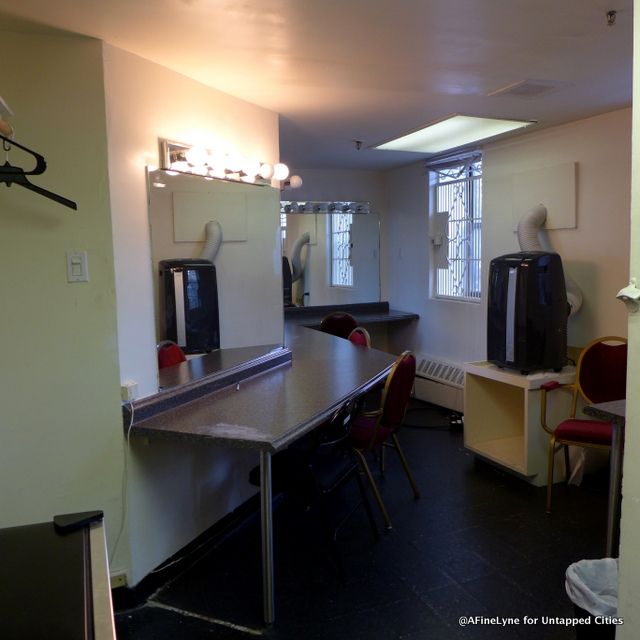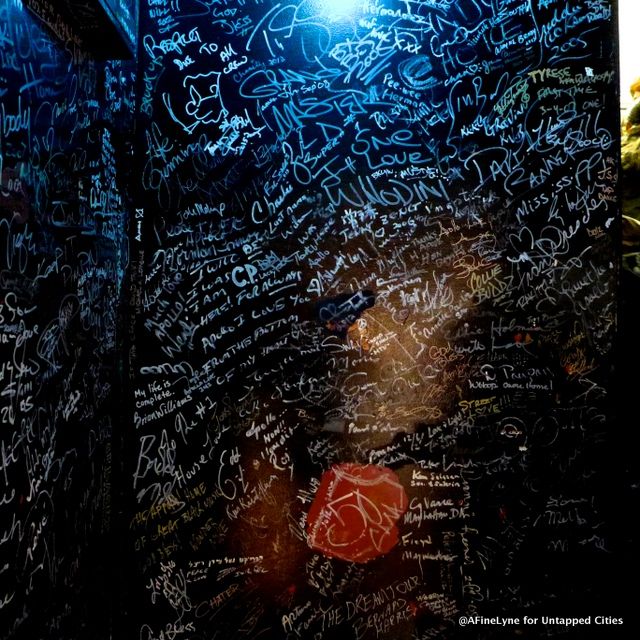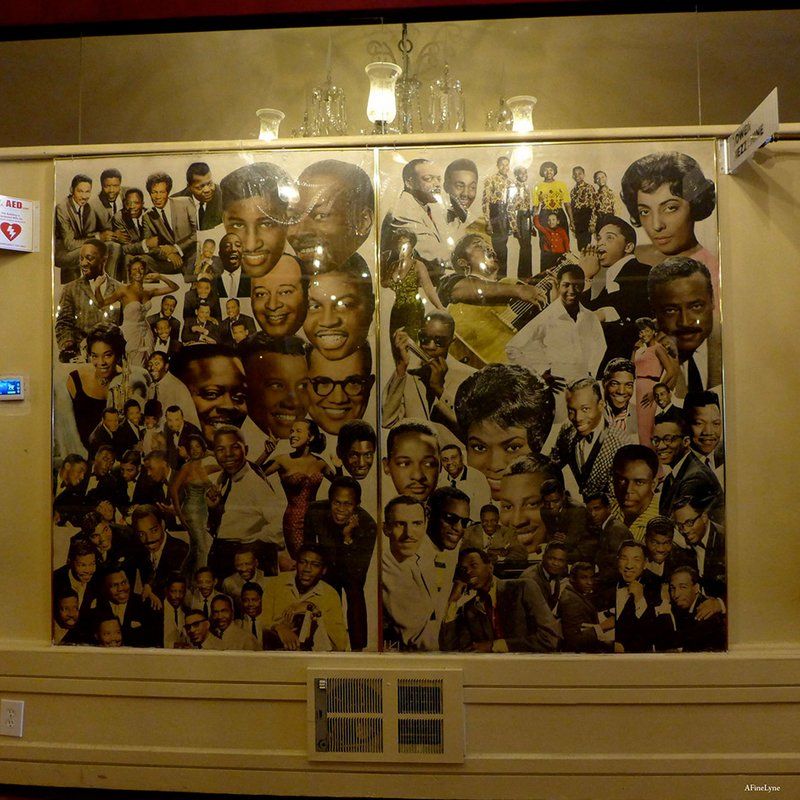Last-Minute NYC Holiday Gift Guide 🎁
We’ve created a holiday gift guide with presents for the intrepid New Yorker that should arrive just in time—


They say the legendary Apollo Theater is where stars are born and legends are made. James Brown considered it so much a second home that his body was brought to the Apollo before his funeral. It was the springboard for music legends like Ella Fitzgerald, Billie Holiday, Diana Ross & The Supremes, The Jackson 5, Patti LaBelle, Marvin Gaye, Stevie Wonder, Aretha Franklin and so many more. The theater highlighted African-American performers, but later included such popular artists as Dave Brubeck, Buddy Rich, Stan Getz, and others. The first place the Beatles wanted to see when they came to America in 1964 was the Apollo, and Paul McCartney refers to it as the “Holy Grail.” We recently took a tour of the legendary Apollo, and here are ten secrets we found backstage.
Billy Mitchell, Tour Director and In-House Historian, is probably the best-kept secret of all. Originally sent by his mother to pick up money from an aunt who lived across the street from the Apollo, he was approached by Frank Schiffman, owner of the Apollo, who asked him if he would like to make some money. He began running errands for entertainers like Flip Wilson, Moms Mabley, Ray Charles, and the Godfather of Soul, James Brown. Billy was 15. The year was 1965.
We’re sure he knows more secrets than he is willing to share, but in sharing a few he recalls how Flip Wilson used to sometimes sleep overnight under the stage. He had a cart bed and chest of drawers where he kept his clothes, and he would hang his wet suit on the pipes to dry in time for the next day’s show. Billy would see a sightless Ray Charles gambling in the alley behind the theater. The 1980s brought with it a different audience to Apollo’s Amateur Night. Mike Tyson would, on occasion, throw hundred dollar bills from his box seat down onto the stage to the contestants. Billy remembers Little Stevie Wonder when they were both 15, and he remembers a nine-year-old Michael Jackson performing with his brothers on Amateur Night in 1969. He’ll tell you that he owes his own success to James Brown, who took an interest in making sure he applied himself in school in his early years and later helped with his college tuition.
The building has undergone a series of renovations over the years. Billy made sure to get a piece of the original stage floor and a brick from the original foundation. Both pieces are in a frame hanging in his office. His book, They Call Me Mr. Apollo, is filled with antidotes from his adventurous life at the Apollo. He also shares these experiences when giving historic tours at The Apollo. When asked if he believes there are spirits roaming the building, he will tell you that he feels their presence every time he enters. Dream Big, he will tell you. Dreams do come true.
Designed by architect George Keister in 1914, the building now known as The Apollo Theater began life as a burlesque hall. Hurting & Seamon New Burlesque Theater was opened by Sidney Cohen to an all-white audience. The club, with its racy performances, was one of many popular burlesque establishments that soon became the target of an anti-burlesque sentiment, and the watchful eye of Fiorello La Guardia, who would become Mayor of New York City in 1934. La Guardia’s war on burlesque took center stage because of his concern that these establishments were corrupting the morals of the city – or so he said. He was part of a powerful censorship group that won its battle by simply denying the renewal of burlesque theater licenses. The Hurting & Seamon New Burlesque Theater closed its doors in 1933.

The end of burlesque created the beginning of new programming, and along with that, a change in name. Sidney Cohen and his partner, Morris Sussman, reopened the theater in 1934. The Harlem Renaissance and African-American music and entertainment were to take center stage. The name for this new venue would come from the Greek God, Apollo, the God of music, poetry and the sun. The Apollo Theater would shine its spotlight on all that African-American culture had to offer, and become the first theater to allow a mixed-race audience. It was the only theater in the city to hire blacks for backstage jobs, and it became the largest employer of black theatrical workers in the nation.
The Master of Ceremonies, Ralph Cooper (1908-1992) put together what was called a “Colored Review”, which included everything from jazz, to the poetry of Langston Hughes, Benny Carter’s Orchestra, and the Apollo Chorus Girls. It is worth noting that the Apollo Chorus Girls went on strike in the 1940s, winning an increase in salary from $22.50 to $25.00 per week. Music from Audition Night was broadcast over radio station WMCA and carried on a national network of twenty-one stations. Frank Schiffman and Leo Brecher took over the Apollo in 1935, and the two families would operate the theater until the late 1970s.

The Harlem Lafayette Theater, located on Seventh Avenue between 131st and 132nd Streets was a popular venue, where aspiring entertainers would prepare for a show around a particular tree near the theater. This tree, on the “Boulevard of Dreams,” was thought to be a sort of good-luck charm, since it seemed that those who touched it had great luck with their performances and staying employed. When the street was widened, the tree was cut down. Ralph Cooper was quick to buy a piece of that “good luck stump” and bring it back to the Apollo. Today the stump sits on a pedestal at stage right, where every entertainer can give the traditional rub for good luck before taking the stage.


While The Apollo Theater has installed modern dressing rooms, complete with showers, the original dressing rooms are where our modern-day performers want to be. They long to stand in the same space as Ella (Fitzgerald), Sarah (Vaughan), Wilson (Pickett), Gladys (Knight), and the Jackson Five.
When performers leave the dressing room, they wait in The Apollo’s Green Room, just below the stage, where they can do a bit of last-minute rehearsing, or check their appearance in the wall-wide mirror. They are keenly aware that all of the greats stood in that same room, minus the flat-paneled TV screens that now adorn each wall.

The Wall of Signatures was started by the stage crew in 1989, and can be found just off stage right. Hundreds of major stars have signed the wall. It is covered from top to bottom with names like Stevie Wonder, Michael Jackson, Snoop Dog, P. Diddy, John Legend, LeBron James (that one is way up high), and even the signatures of President and Mrs. Obama. Those are the names we found while walking up the steps to the dressing rooms.

Beyond the Wall of Signatures, you will pass by all the electronic gear that keeps the stage humming. You are now on stage right, in full view of the Tree of Hope, and the audience beyond.
As any entertainer will tell you, playing to a tough crowd ain’t easy. And the Apollo Theater is historically known for letting you know what they think. When the audience starts to boo, “The Executioner” will give ’em the boot. But some entertainers who got the boot made it anyway. Luther Vandross first appeared at Amateur Night when he was 18. He was booted off the stage all five times that he was in the competition. Dave Chappelle, the comedian, took the stage when he was just 16. He got the boot by the famous Apollo Executioner, the Sandman; and the surprise of all, Lauryn Hill took the stage at the young age of 13, with her rendition of Smokey Robinson’s “Who’s Lovin’ You.” She was booted, without knowing she would someday return to that great stage as a special guest with the Fugees years later. Last week, the finals for the 2015 “Amateur Night” were held, and the winner of the “Child Star of Tomorrow” was a ten-year-old dancer by the name of Haruto Maeda, who won $2,000. The first place in the adult competition, the singer Burgundy Williams, knocked ’em dead, and took home $10,000.
In 2011, The Apollo Theater added a new venue, launching the Apollo Music Cafe. The Cafe is a more intimate setting, featuring artists in a lounge setting. Located on the Apollo’s upper levels, this venue can accommodate up to 150 people, and has a bar with stage-side seating. It has been called a “small venue with big talent.”

Ella Fitzgerald made her singing debut at The Apollo in 1934 during Amateur Night. On a dare from two friends, she signed up to go on stage as a dancer. But when she saw that the popular dance duo The Edwards Sisters were going on stage right before her, she changed her act, and decided to sing instead. She won $25, and recorded with Decca Records the following year. She was 17.
Yes indeed, and I’ll tell you how that happened. The 1,500 seat theater fell upon hard times in the 1970s, finding itself in great financial difficulty. It closed in 1979. But in 1981, a prominent lawyer, political media and technology executive decided to take a chance on the historic theater. It was Percy Sutton. Under Sutton’s ownership, the theater was equipped with a recording and television studio, and brought back to life. In 1983, the Apollo Theater received State and City Landmark status. Ownership was transferred to the State of New York in 1992, and the theater was leased to the non-profit Apollo Theater Foundation, Inc. for 99 years, with a monthly rent of just $1.00.
You can read more about Harlem here. Next, check out the Top 15 Secrets of Columbia University. Get in touch with the author at AFineLyne.
Subscribe to our newsletter